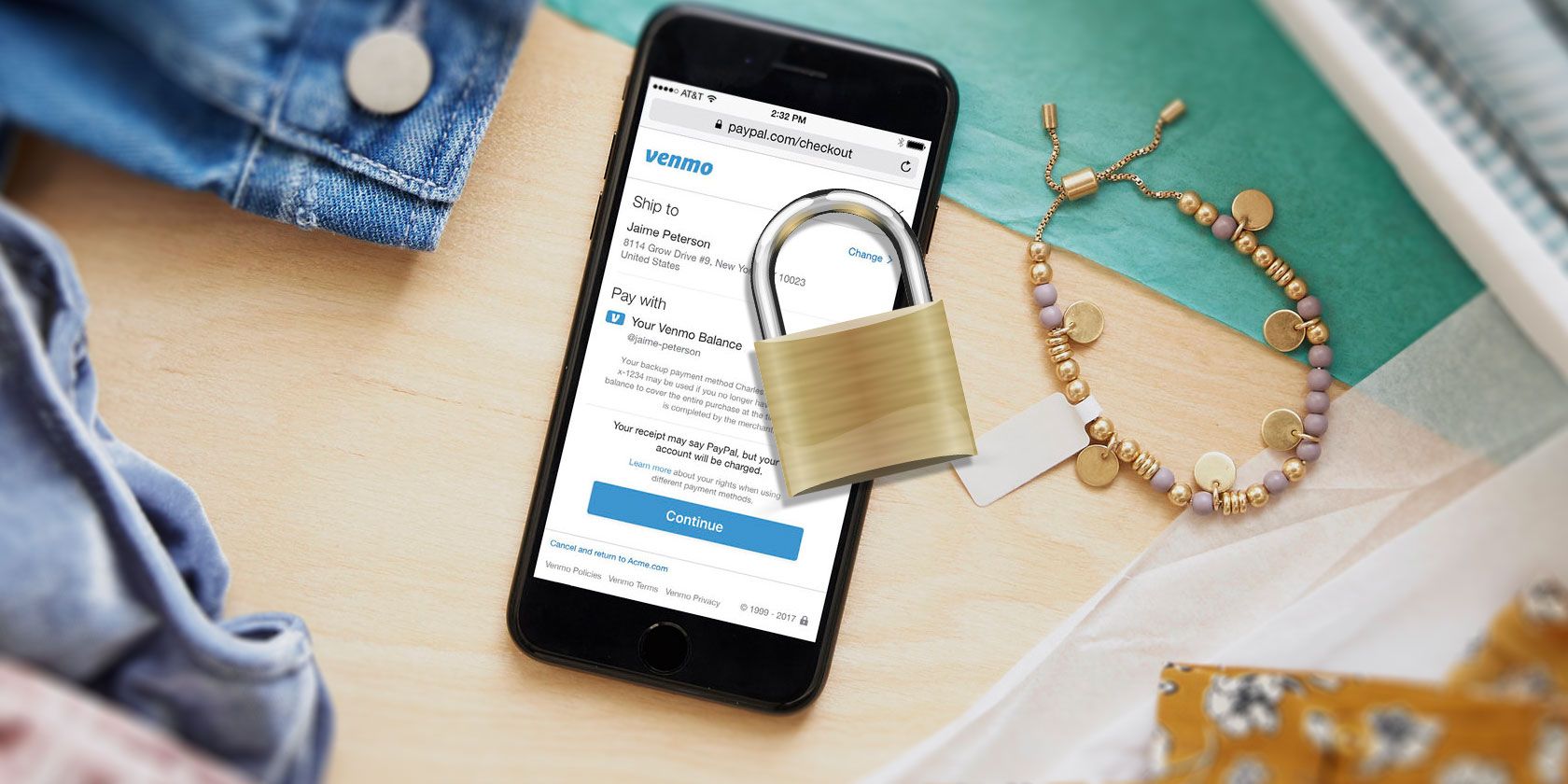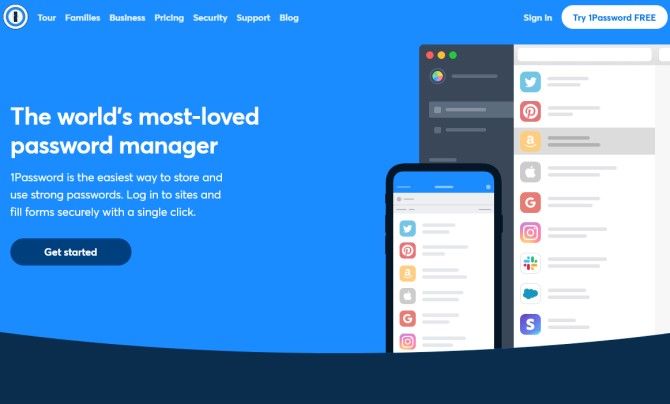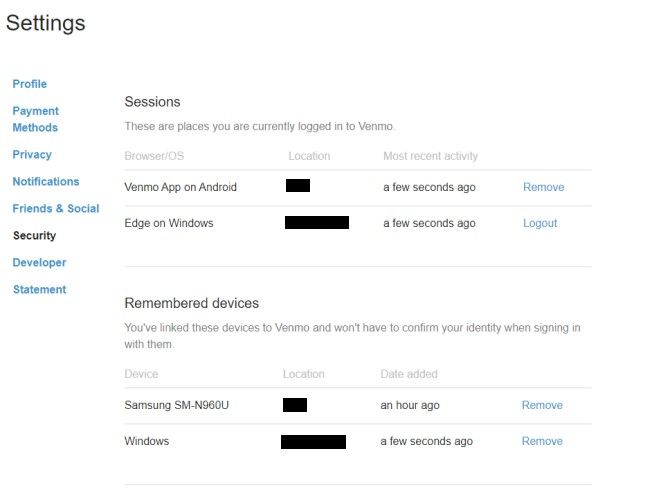Nothing is more important than keeping your financial accounts secure. PayPal's mobile payment service, Venmo, has been criticized for its security issues in the past. After all, its default public feed of transactions doesn't sit well with most users.
So, is Venmo safe? While the service has its flaws, and there are Venmo scams out there, there are plenty of things you can do to secure your Venmo account and keep your financial information private.
1. Use a Password Generator
The first and most obvious line of security on Venmo is to use a strong password. You can generate complex passwords using a handy password manager, such as 1Password or LastPass.
These free tools not only have built-in password generators, but they also allow you to choose the level of complexity of your password. Better yet, they even store your passwords so you don't have to memorize them yourself. When you need it, the password manager automatically inputs the password for you.
2. Turn Off Default Public Settings
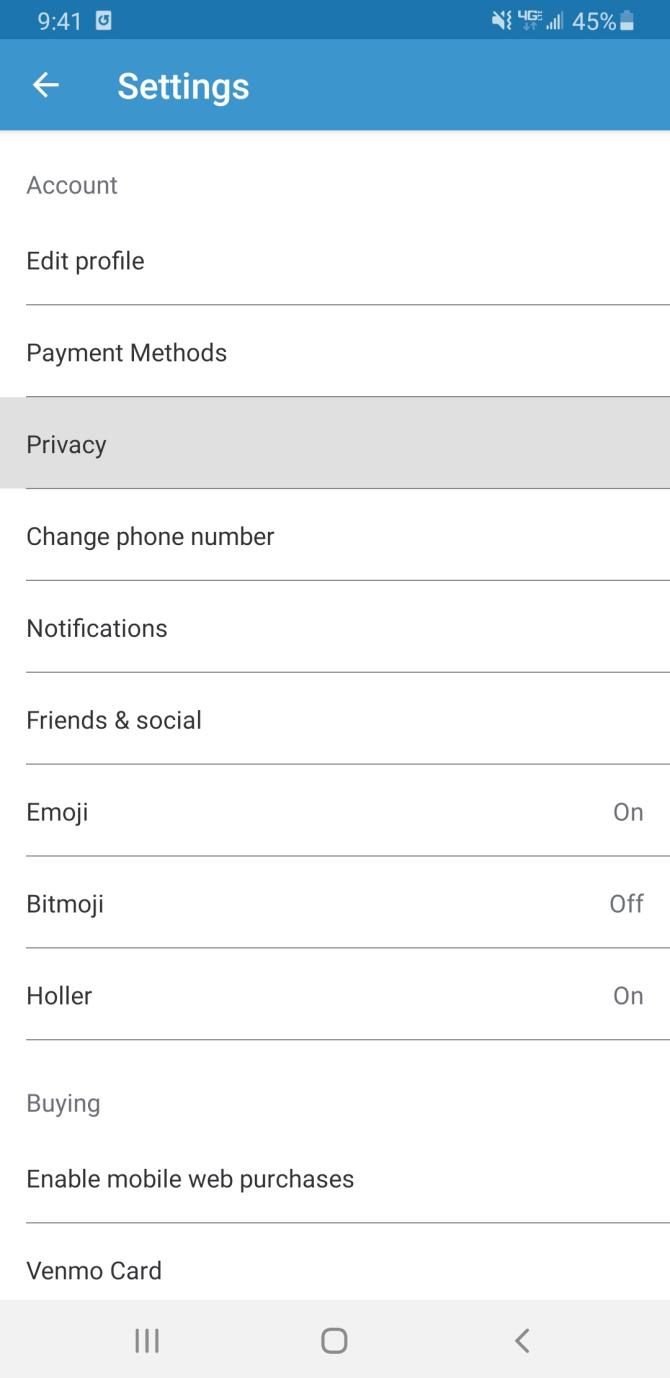
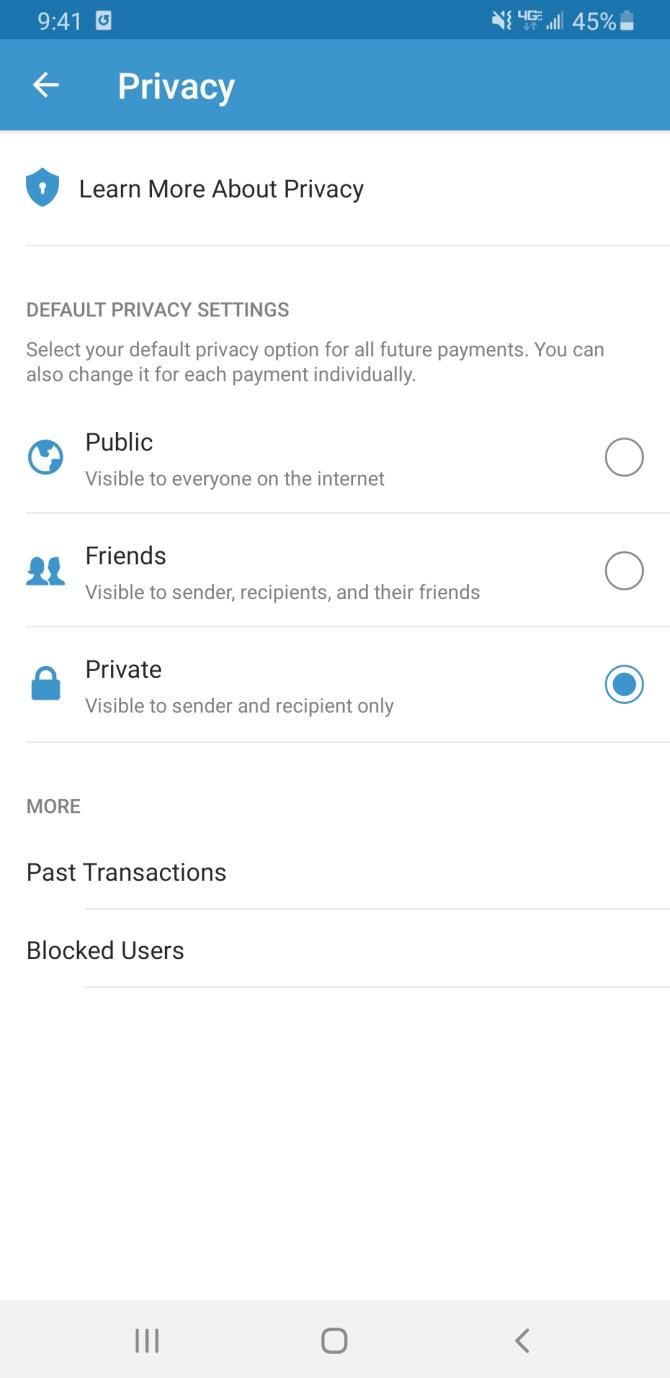
The Venmo feed is divided into three tabs: your transactions, your friends' transactions, and public transactions. Depending on your privacy settings, your sent and received Venmo payments might show up in all feeds.
In the transactions tab for your friends only, you can view a running list of your friends' recent transactions. And if your phone number, email address, or any other contact information you use in Venmo is in someone else's contact list, they'll see all of your Venmo transactions as well.
If you're curious about the public feed, it's exactly what it sounds like. Anyone who uses Venmo and has their privacy settings disabled will show up in this feed. This is what makes so many people question how safe Venmo really is.
A surprising number of people don't appear to realize that transaction information on Venmo is public by default. By leaving your transaction information public, this also means that marketers can keep tabs on your spending habits and target you accordingly. In fact, public transactions are accessible using the Venmo API, meaning developers can access your data without even using the app.
So how do you fix it? To change your privacy settings, do the following:
- Tap the menu (hamburger) button.
- Tap Settings > Privacy.
- Under "Default Privacy Settings" select Private. This means only you and your recipient can view your transactions.
You can also change the privacy settings of past transactions:
- Under "More" tap Past Transactions.
- Tap Change All to Private.
According to Venmo, if your friends opt for a more public setting for their transactions, your privacy setting will override their choice to keep their payments public. Turning on the privacy setting is another layer of Venmo protection that you need to have.
3. Enable Two-Factor Authentication
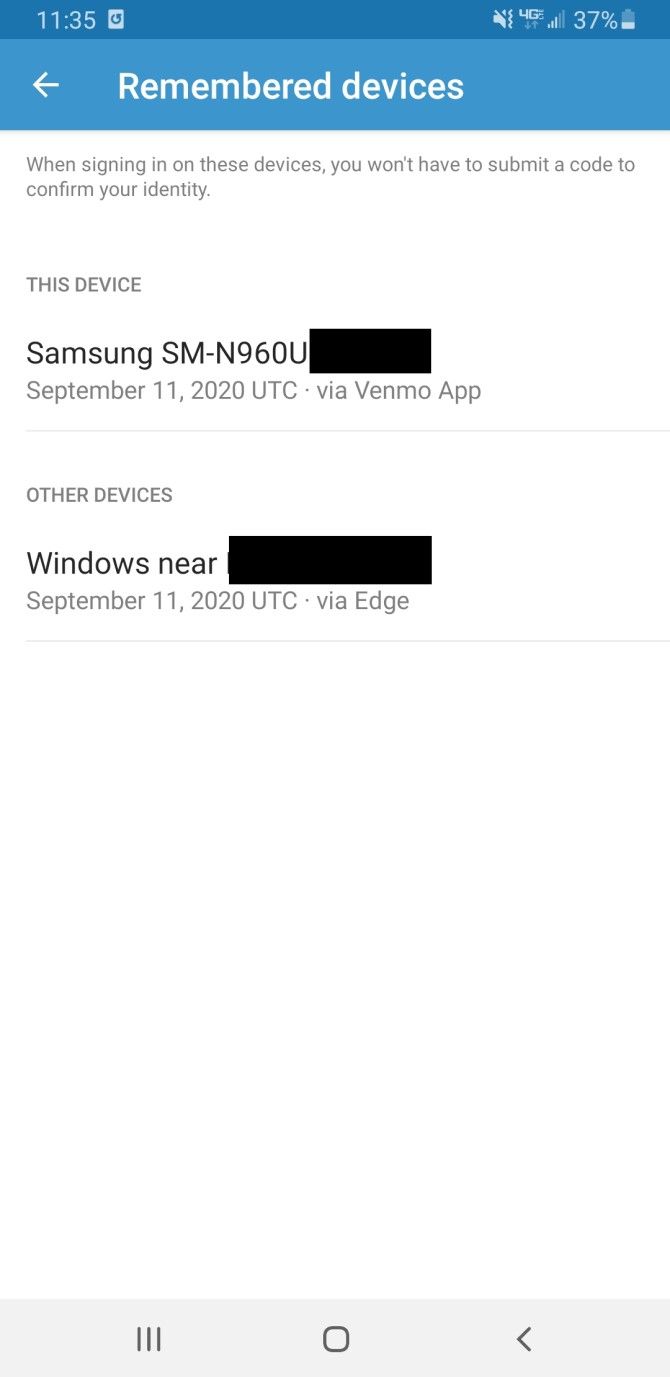
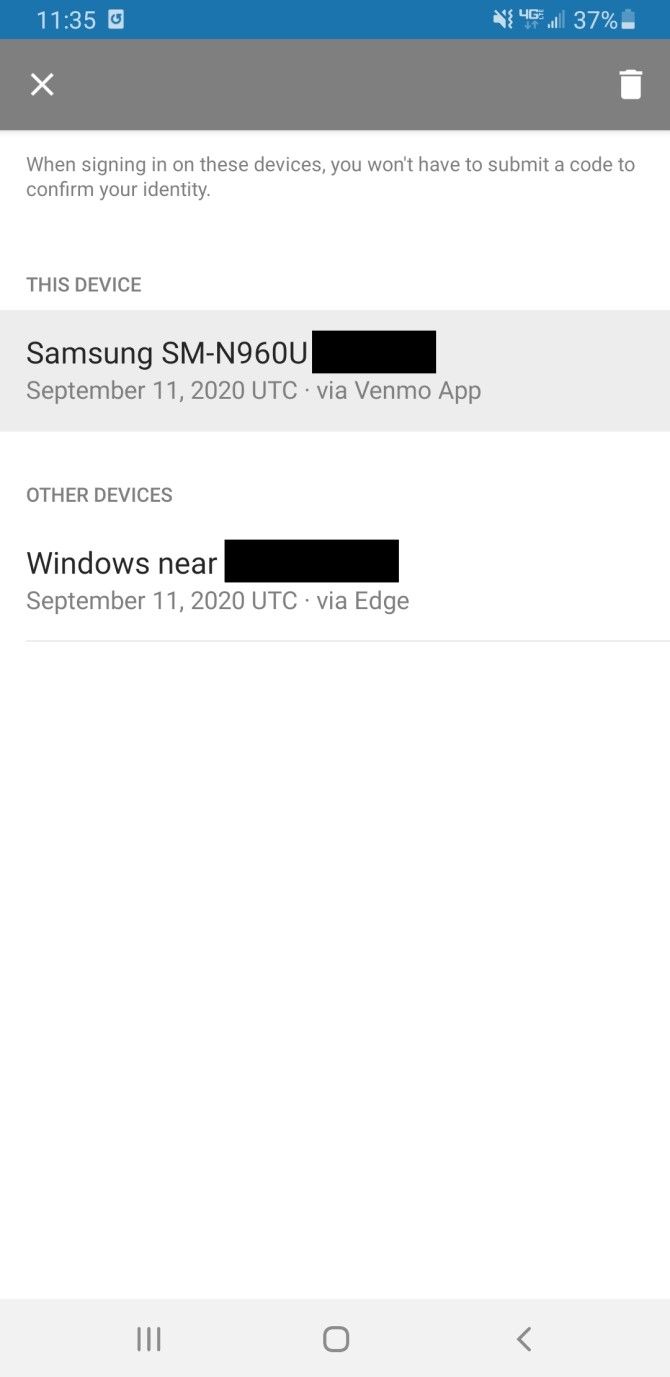
By now, using two-factor authentication (2FA) wherever it's available is a wise choice. And of course, where your finances are in play, it's a no-brainer.
If you're not familiar with 2FA, it's an added layer of security that allows you to confirm your identity before you can access your accounts. You can confirm your identity either by entering a digital code that's sent to you via SMS, or by using an authentication app installed on your phone.
When Venmo first launched, it surprisingly didn't include 2FA in its login options. This changed in 2015, and to Venmo's credit, the setting is enabled by default on all accounts.
Every time you sign in from an unknown device, Venmo will ask you to verify your identity. Venmo uses SMS 2FA, which isn't the most secure kind of 2FA, but it's better than nothing.
With Venmo's 2FA settings, you can add remembered devices to your account, so you don't have to use 2FA on your devices every time you log in to your Venmo account. However, this convenience doesn't keep your account fully secure.
If Venmo already "remembers" some of your devices, you might want to erase them to enable 2FA. To do this, follow these steps:
- Head to the menu (hamburger) button.
- Select Settings > Remembered devices.
- Long press on the devices you wish to delete, and then tap the trash can icon that appears in the top right corner of the screen.
The next time you attempt to log in to Venmo on any of the deleted devices, Venmo will ask you to verify your identity with a code sent via SMS. This makes Venmo much safer to use.
4. Add a PIN Code To the App
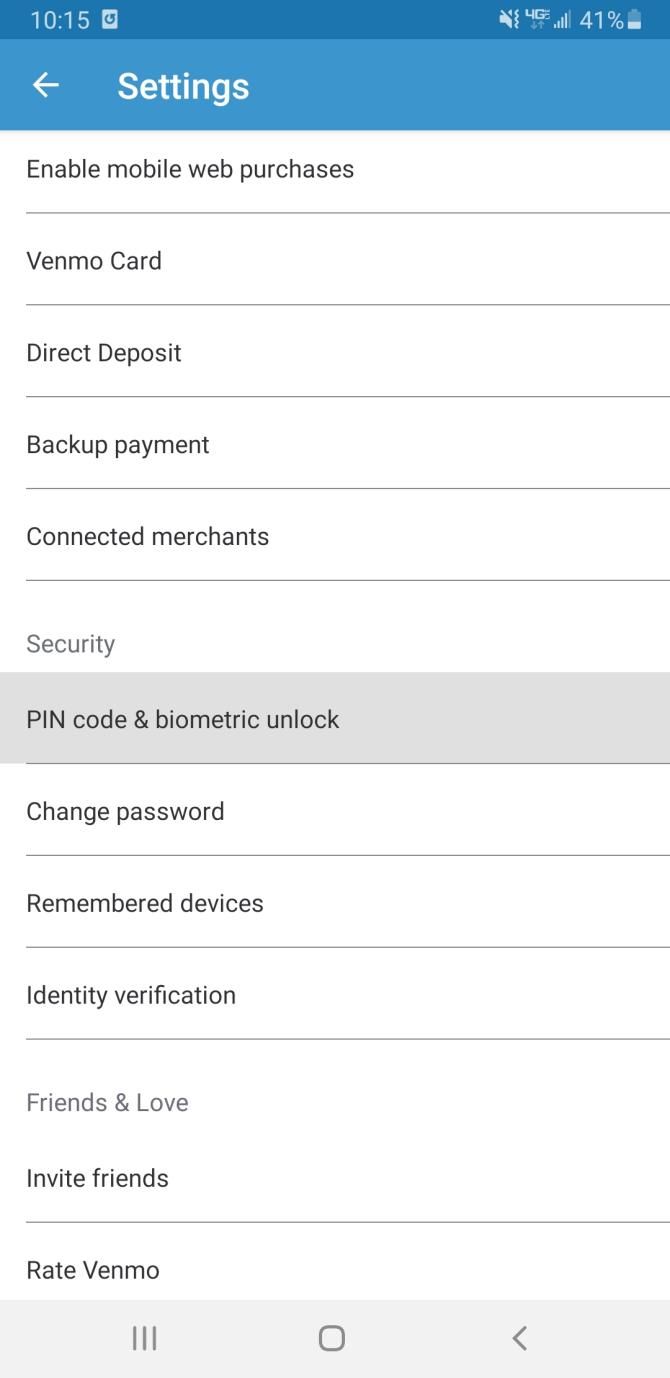
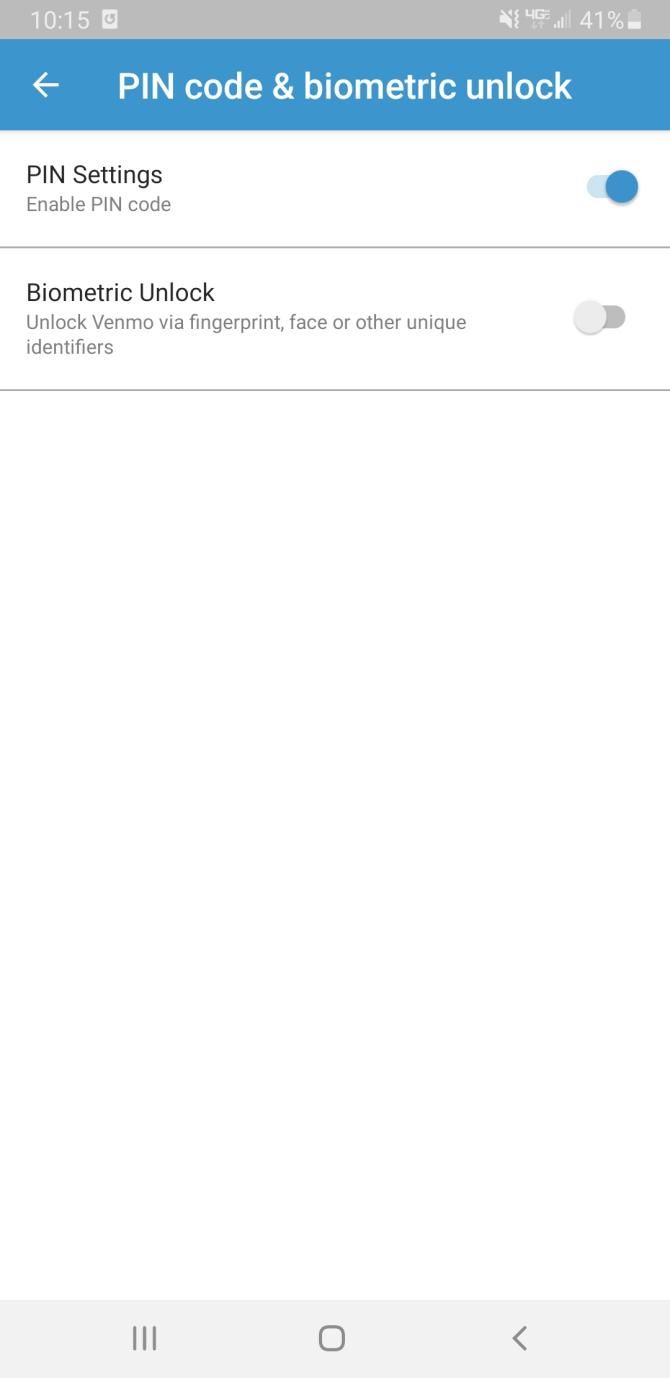
Aside from 2FA, Venmo has a few more security settings that you should turn on. It's important to enable a PIN code and/or biometric access to your Venmo account.
This means that if someone gains access to your phone, they would need to know your PIN code to access your Venmo account. And if you turn on biometric access, they would need your fingerprint, face, or another type of identifier that's unique to you.
To enable these features, do the following:
- Tap the Menu (hamburger) button.
- Tap Settings > PIN code & biometric unlock.
- Toggle on PIN Settings, and enter a four-digit PIN.
- Toggle on Biometric Unlock (if your phone supports it).
Now when you open your Venmo app, you'll have the choice of using a biometric identifier or four-digit PIN to unlock the app.
5. Secure Your Phone With a Lock Screen
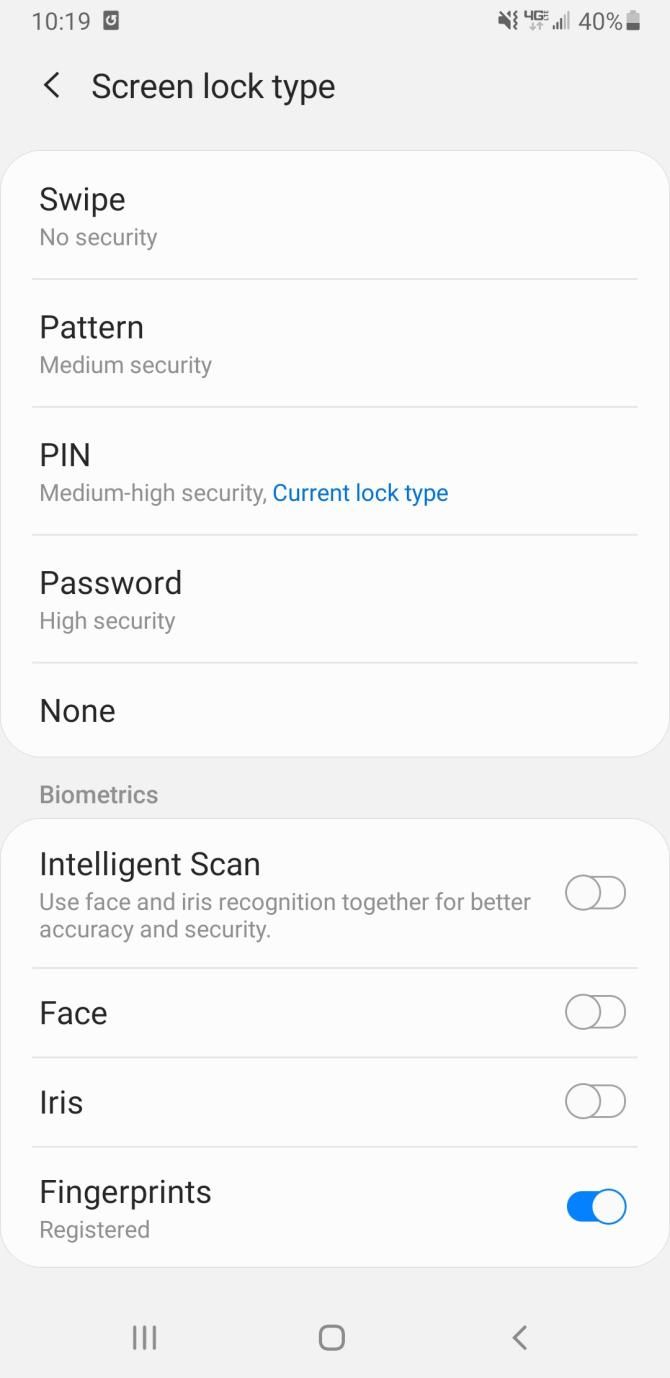
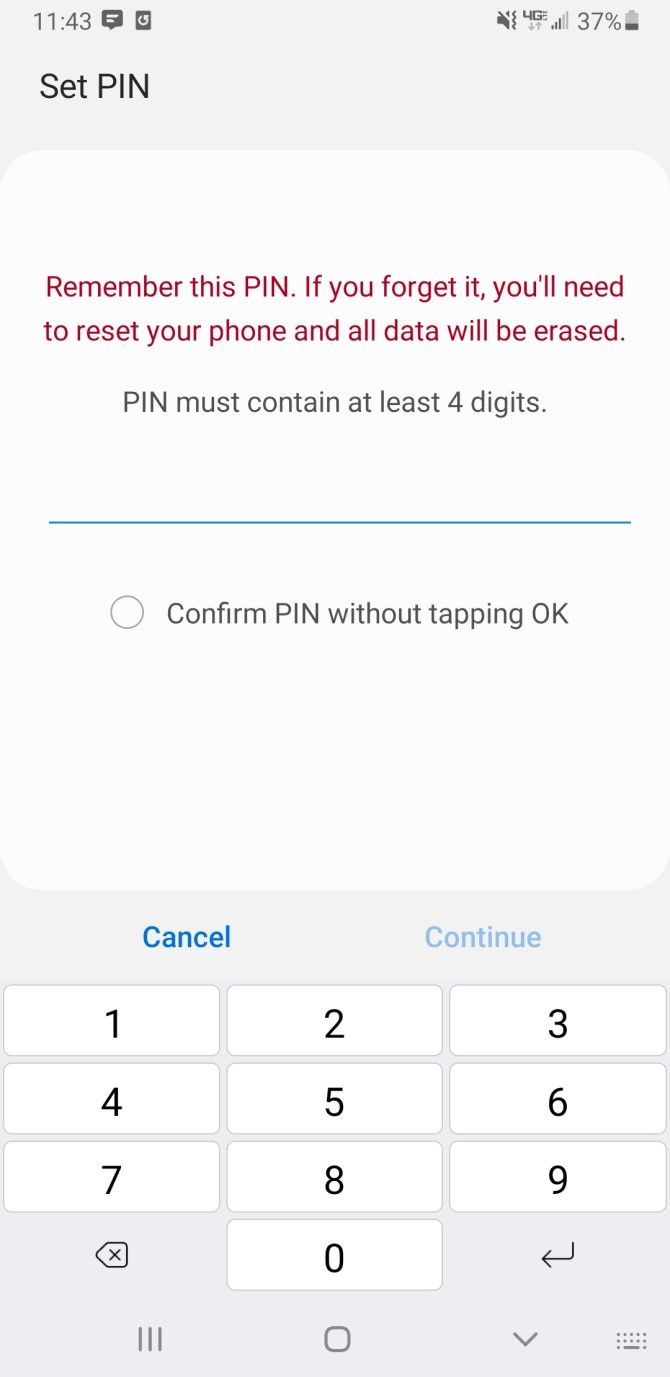
2FA isn't much use if your phone itself isn't secure. However, you can take certain measures to make sure that your phone is properly secured. At the very least, you should have a PIN code or fingerprint recognition enabled on your phone.
There are plenty of methods available to unlock your phone from passwords and pin codes, to pattern locks and facial or fingerprint recognition. If your phone has a fingerprint scanner, this is probably one of the easiest and most secure ways to unlock your phone, as you don't have to worry about memorizing a complex password or pattern.
Note: You should also keep an eye on available security updates for your phone, and install them as they're made available.
6. Don't Link To Your Bank Account
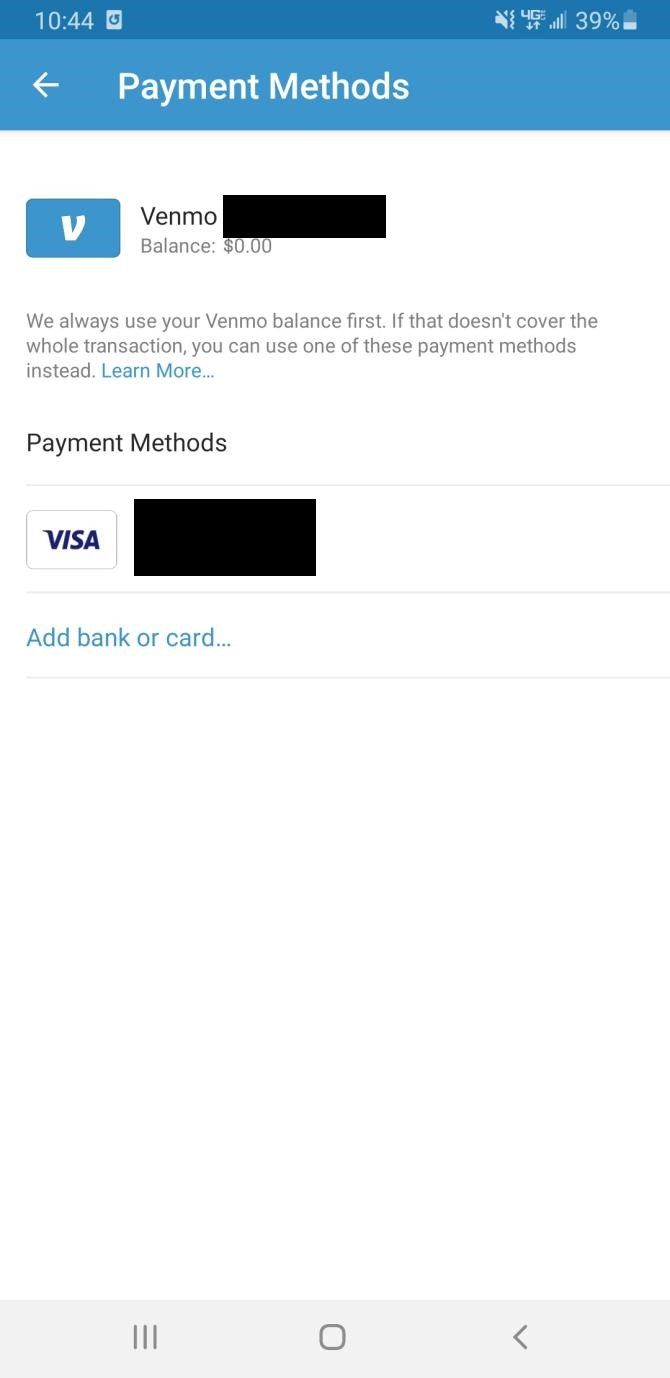
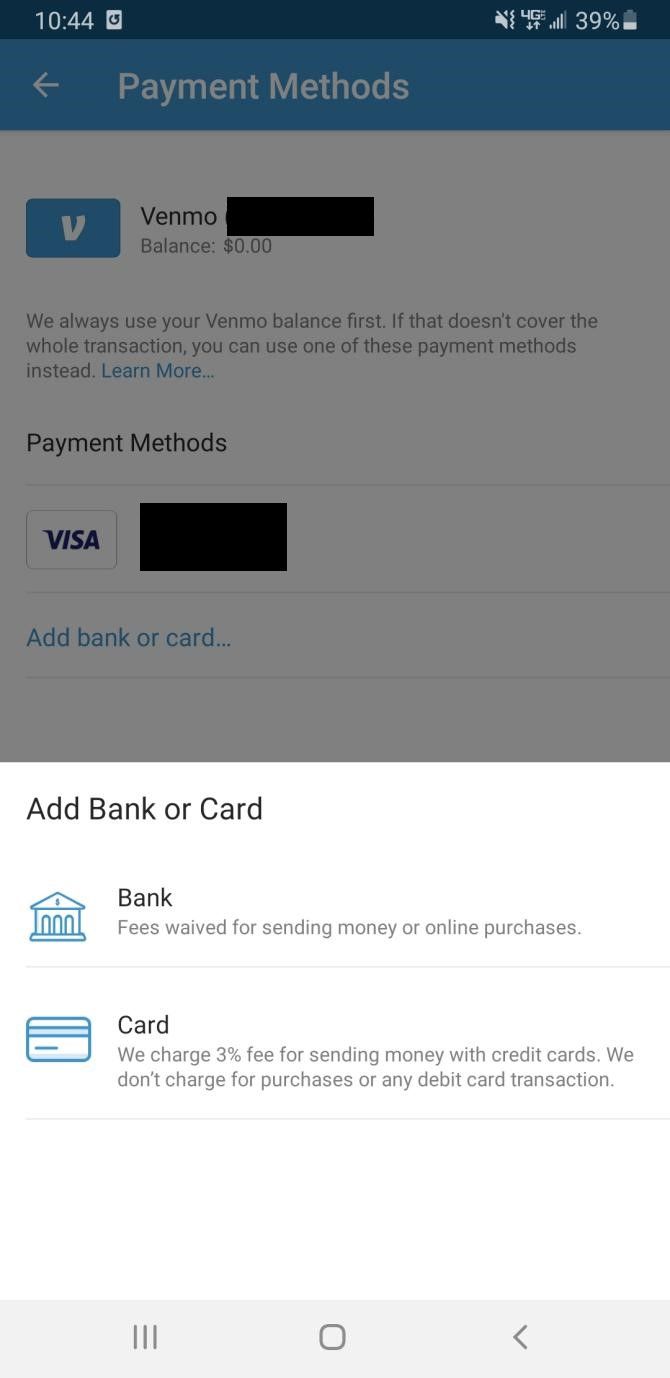
Three methods are available in Venmo for sending money: your bank balance, a debit card, or a credit card. While the latter will cost you a 3 percent fee on each transaction, it's also the most secure.
Any sort of theft or fraud using your credit cards is more likely to be protected by your bank---with little to no liability for you.
Per the FTC, you will never be liable for more than $50 for unauthorized credit card use. With your debit card, depending on how quickly you catch and report it, you could be liable for any amount, from $50 to the entire stolen balance.
You can modify your payment settings by tapping on the Venmo menu and selecting Settings > Payment Methods. From here, you can change your payment method and add a credit card.
If you can avoid using a debit card or linking your bank account altogether, that's for the best. But the safest way to use Venmo is to transfer a balance to your Venmo account---this way, you can disconnect all banking information from the service.
7. Enable Venmo Notifications
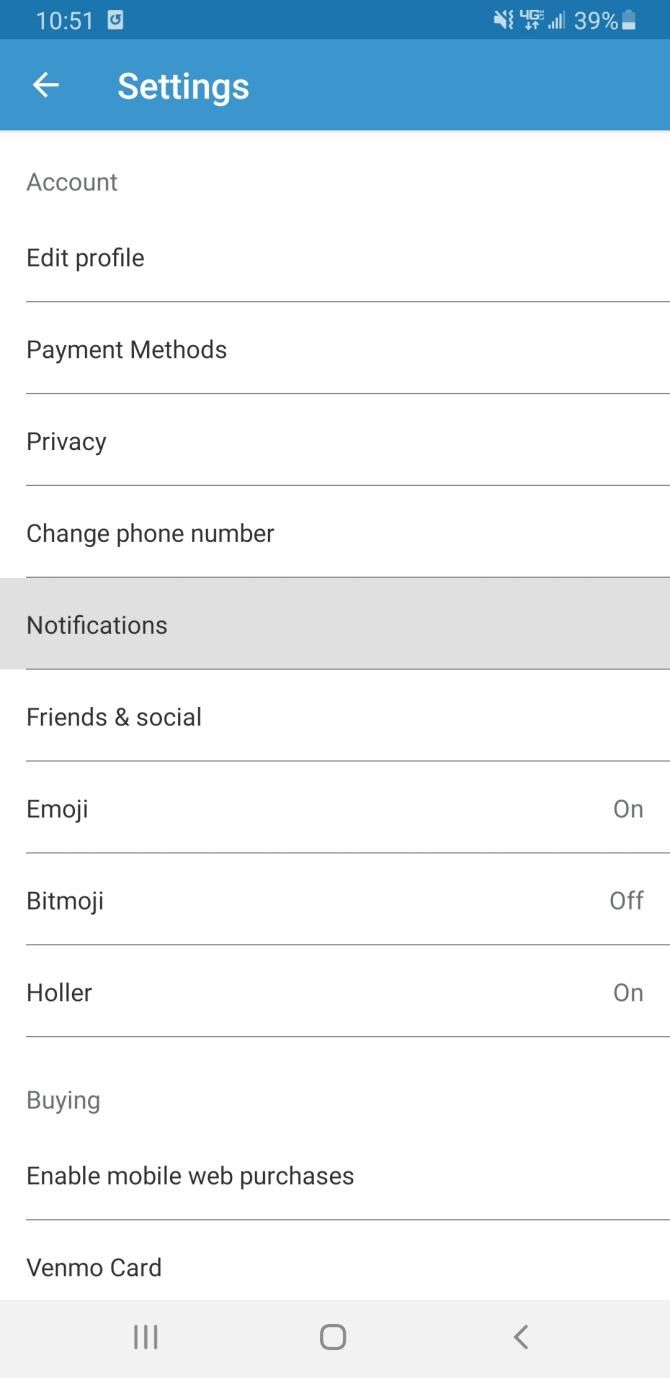

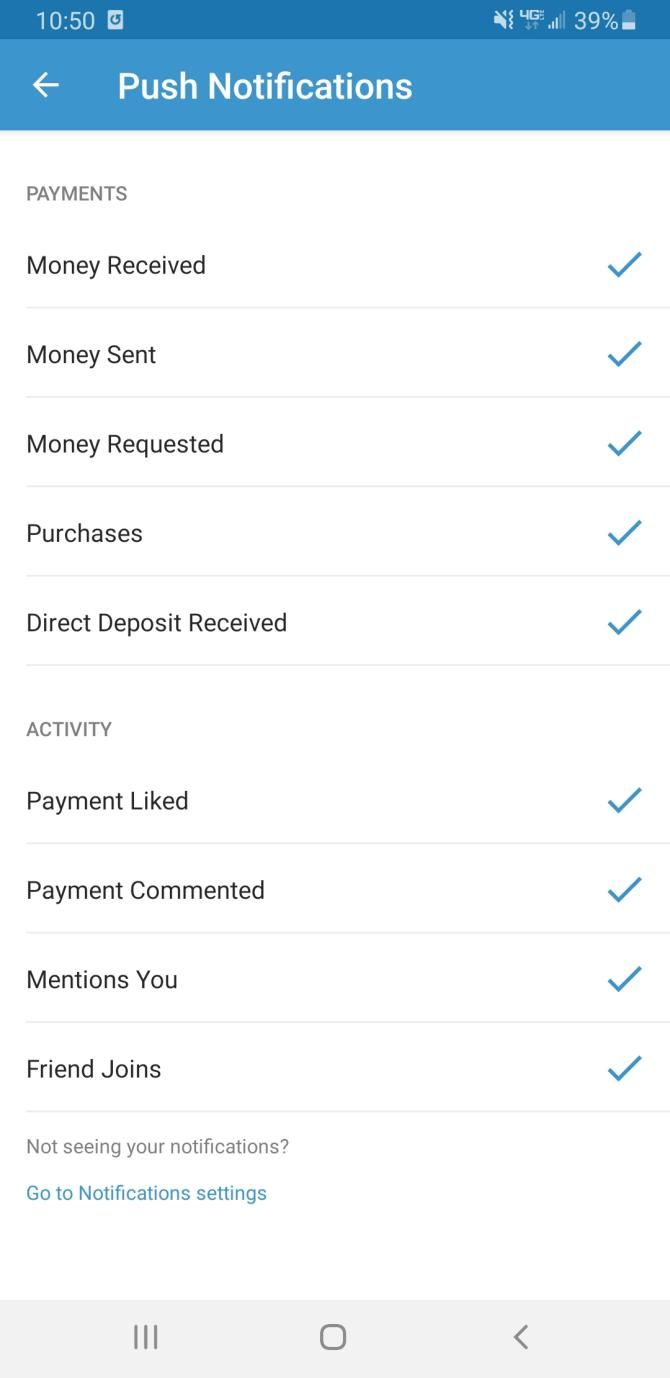
Venmo offers certain kinds of notifications that you should enable. This way, you'll know of any transactions as they happen.
Go to Settings > Notifications to turn on notifications. Here, you'll find three options to choose from: Push Notifications, Text Notifications, and Email Notifications. Push or text notifications are probably better if you want instant updates on changes to your account.
Once you select your preferred notification method, Venmo will present you with an array of notification options you can turn on or off. You'll want to turn on notifications at the very least for Money Sent, but there's no harm in turning all notifications on. This way, you're aware of any strange activity on your account.
8. Don't Venmo Strangers
It's a good idea to only use Venmo with friends and family. Well, it's actually in Venmo's User Agreement!
Venmo's User Agreement says that personal accounts cannot be used for business transactions. So if you send or receive money from someone for a purchase or service, there's no Venmo buyer protection to save you.
Let's say you pay someone for a product and they don't deliver. Venmo cannot refund you without that person's permission. In fact, there's no way to cancel a payment in Venmo unless you inadvertently sent the money to someone who doesn't use Venmo.
Note: You must apply for a business account with Venmo if you plan to use it for business-related transactions.
9. Double-Check Before Tapping "Pay"
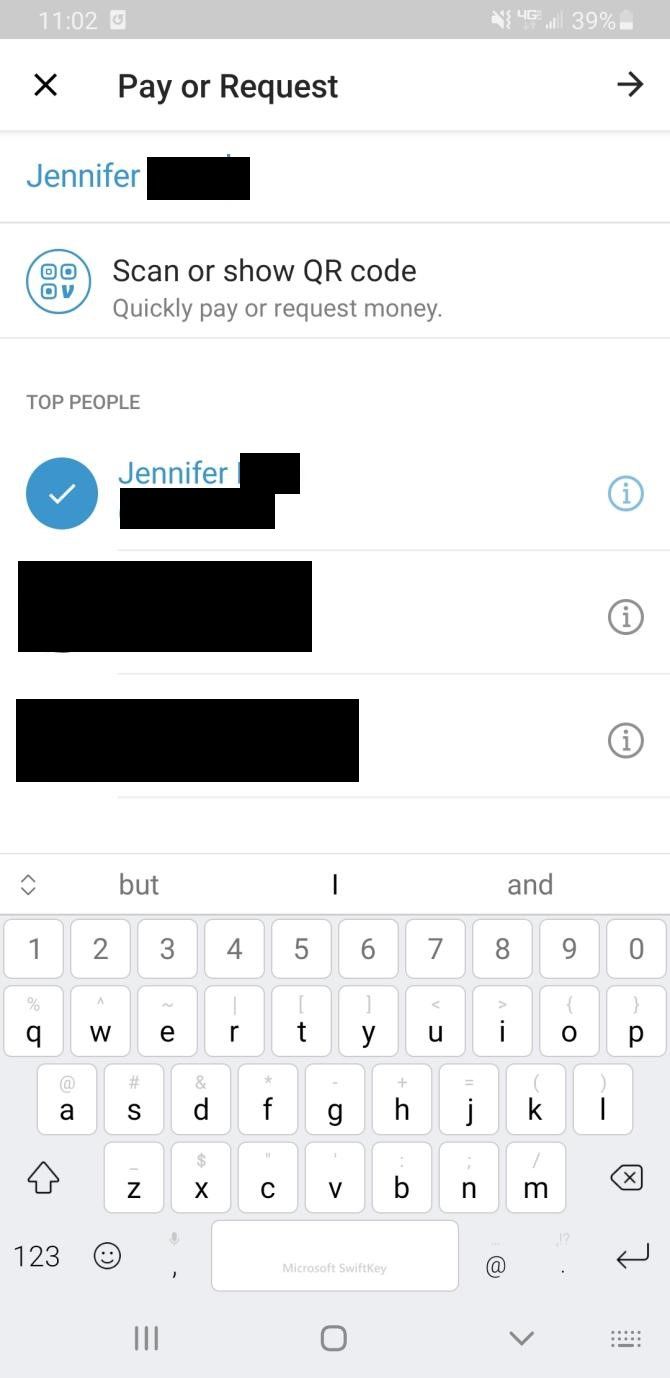
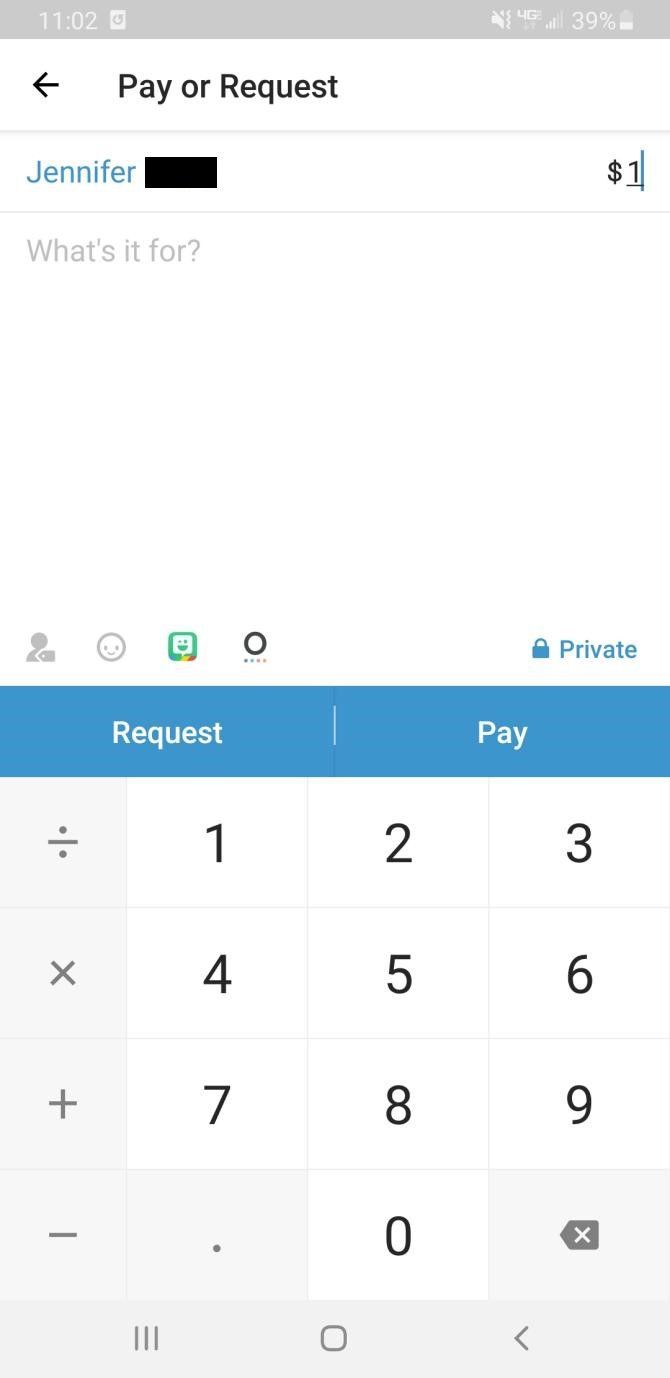
When sending money, always double-check the names, numbers, or email addresses of your contacts. It gets easier as you use Venmo regularly with the same people, but if it's a first-time transaction, keep an eye on the details.
Again, payments can't be canceled by the sender, so if you inadvertently send funds to the wrong contact, you're going to have to rely on them to return the money.
10. Revoke Access And Log Out Sessions
If your phone is lost or stolen, and you've added it as a trusted device, you can immediately revoke access to your account on that device. That means if someone manages to get past your phone security, and you don't have a PIN set up on the app, you can stop them from using your Venmo account.
To do this, log in to your Venmo account in a browser and go to Settings > Security.
Here, you'll see any active sessions in a browser, as well as any remembered devices. You can log out of sessions you don't recognize, and remove devices from your remembered devices list.
As an added measure, you should change your Venmo password if you notice any suspicious activity.
11. Don't Leave a Large Balance In Your Account
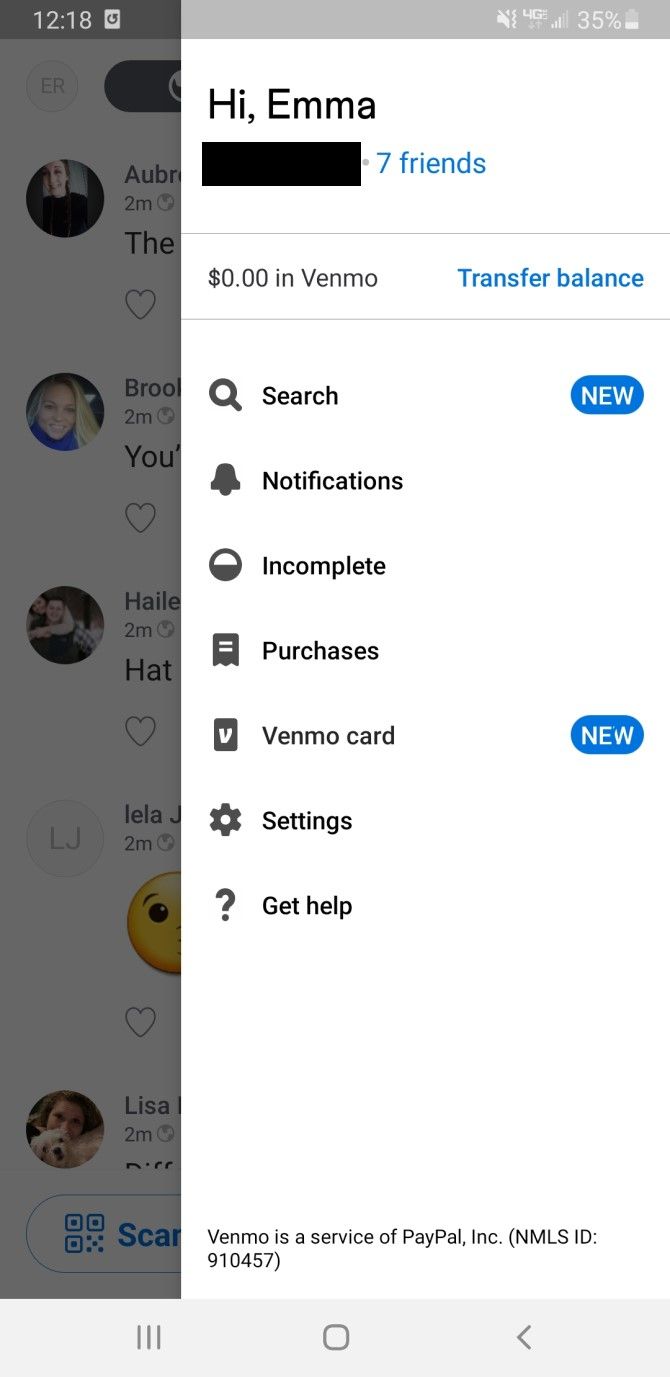

It might be convenient to leave some extra cash in your Venmo account, but it's not a smart idea. If someone manages to get hold of your Venmo account, they'll have access to the money that you never transferred to your bank. This makes it easy for a thief to steal your Venmo balance.
As soon as you receive money from someone, transfer it to your bank account right away. And while it's okay to leave small amounts of money in your Venmo account, you should be careful not to leave hundreds of dollars lying around.
Is Venmo Safe For You?
Venmo is only as safe as you make it. Failing to make your account private, and not adjusting your security options leaves your sensitive information vulnerable. It's best to take the time to look over all your security and privacy settings, and ensure you have the safest options enabled.
Venmo isn't the only financial app you should secure. Remember to check the security settings of your banking apps as well.
For more tips, here's what the differences are between PayPal and Venmo.

